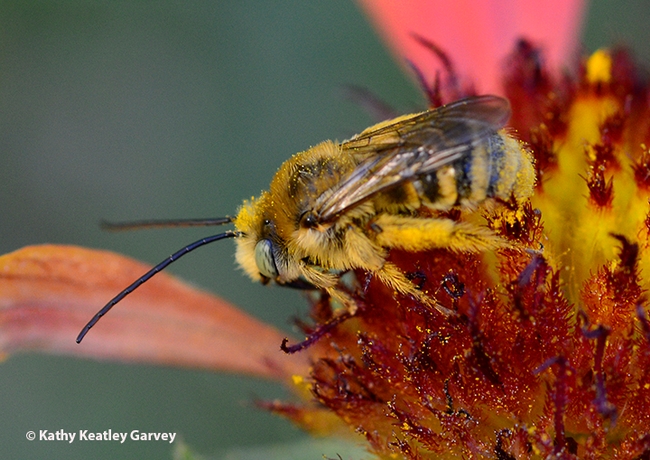- Author: Kathy Keatley Garvey
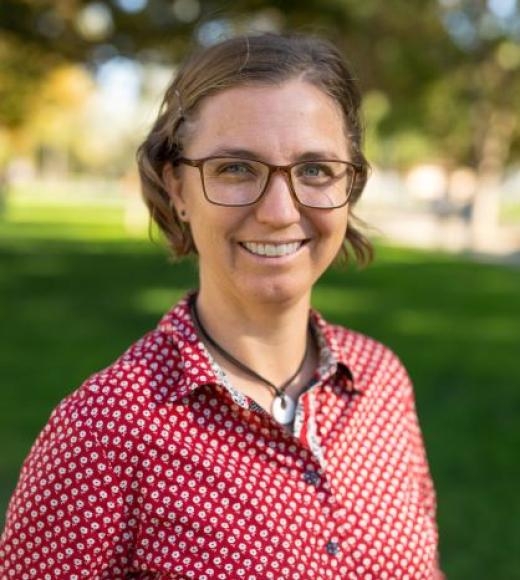
The seminars begin Monday afternoon, Sept. 30 and continue every Monday through Dec. 2.
Nematologist Amanda Hodson, assistant professor of soil ecology and pest management, is coordinating the seminars. All, except one, will be held in Briggs Hall. All, but one, will be on Zoom.
The Zoom link:
https://ucdavis.zoom.us/j/95882849672.
Michael Hoffmann, professor emeritus, Cornell University, will deliver the Thomas and Nina Leigh Distinguished Alumni Award Seminar in the Putah Creek Lodge at 4 p.m. on Oct. 14. (See below)
The list of seminars:
Monday, Sept. 30, 4:10 to 5 p.m., 122 Briggs
Kyle Wickings
Department of Entomology, Cornell University
Title: “Composition and Function of Soil Invertebrate Communities in Residential Greenspaces”
Monday, Oct. 7, 4:10 to 5 p.m., 122 Briggs
Juliana Rangel Posada
Professor of Apiculture, Department of Entomology, Texas A&M University
Title: “Don't Compromise: Food Lipid Content Shapes Protein-Lipid Regulation in Honey Bee (Apis mellifera) Nurses”
Monday, Oct. 14, 4 p.m. to 7 p.m. Thomas and Nina Leigh Distinguished Alumni Award Seminar
Michael Hoffmann
Professor Emeritus, Cornell University
Title: “Our Changing Menu: Using the Power of Food to Confront Climate Change”
This will take place beginning at 4 p.m. in the Putah Creek Lodge and will include a social, lecture and dinner. Reservations closed. (See more)
Monday, Oct. 21, 4:10 to 5 p.m.,122 Briggs
Andrew Corbett
Research Affiliate, UC Davis Department of Entomology and Nematology (formerly with the lab of UC Davis distinguished professor Jay Rosenheim, now emeritus)
Title: "In Silico Experiments with the Effect of Natural Habitats on Biological Control in Agricultural Landscapes."
Monday, Oct. 28, 4:10 to 5 p.m., 122 Briggs
Jolene Saldivar
UC Davis Chancellor's Postdoctoral Fellow, lab of Professor Louie Yang
Title: "Disturbance in Coastal Sage Scrub and the Implications for Migratory Butterflies”
Monday, Nov. 4, 4:10 to 5 p.m., 122 Briggs
Eliza Litsey (exit seminar)
Litsey, a former graduate student in the honey bee lab of Elina Niño, UC Davis Department of Entomology, received her master's degree in entomology in June 2024 and is now a laboratory technician at the lab of research entomologist Julia Fine, USDA/ARS, Davis. Litzey also holds a bachelor's degree from UC Davis.)
Monday, Nov. 18, 122 Briggs (in-person only; will not on Zoom)
Andre Custodio Franco
Assistant Professor, Indiana University Bloomington
Title: "Deciphering the Soil Macrobiome: Belowground Communities Driving Ecosystem Responses to Global Change”
Monday, Nov. 25, 4:10 to 5 p.m., 122 Briggs
Christine Sprunger
Associate Professor of Soil Health at Michigan State University
Title: "Nematodes as Bioindicators of Soil Health and Climate Resiliency”
Monday, Dec. 2, 4:10 to 5 p.m., 122 Briggs
Inga Zasada
Research Plant Pathologist, USDA-ARS
Title: "How an Applied Nematolgist Uses Genomic Tools to Address Plant-Parasitic Nematode Research”
For more information, contact Hodson at akhodson@ucdavis.edu
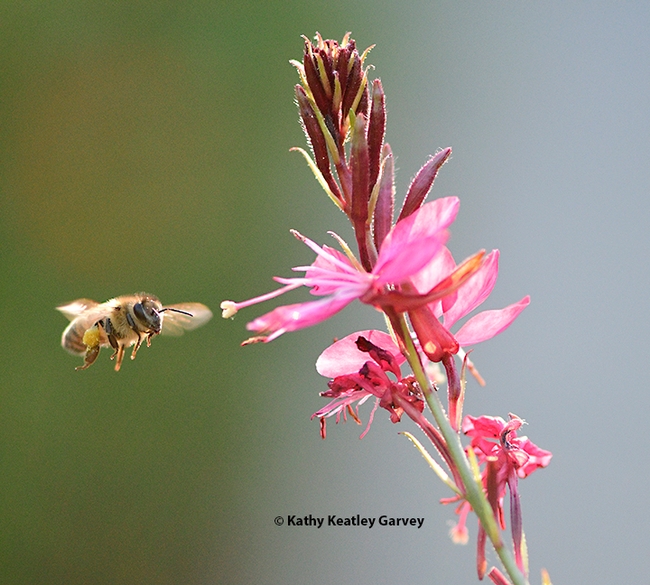
- Author: Kathy Keatley Garvey
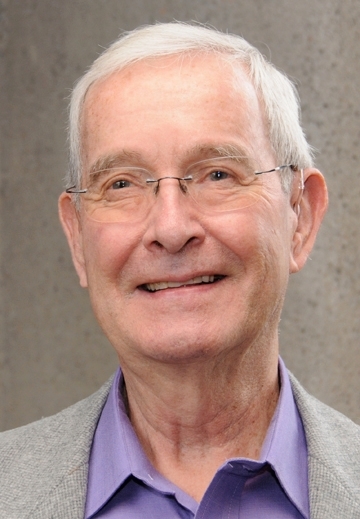
It's Labor Day, but honey bees aren't relaxing. They're out in force collecting nectar, pollen, water and propolis.
Ever seen them weighted down with huge pollen loads?
They seem to have "Herculean strength," don't you think? That's what Norman "Norm" Gary, emeritus professor of entomology at the University of California, Davis, writes in his book, Honey Bee Hobbyist: The Care and Keeping of Bees, considered the bible for hobby beekeepers.
"Ten pollen foraging trips a day is par for the typical pollen forager," Gary relates. "When pollen is abundant, a bee can gather a full load in as little as 10 minutes by visiting several dozen flowers...When all factors are favorable, bees from a strong colony can collect many thousands of loads a day. Incidentally, when.beekeepers describe their colonies as strong. they really mean populous--even though bees as individuals seem to have Herculean strength, flying with loads nearly as heavy as their body weight."
In an email, he wrote: "A worker honey bee weighs about 100 milligrams and are reported to be able to carry about 75 milligrams…approximately 75 percent of is body weight!"
Gary, now 90, served as a member of the UC Davis faculty from 1962-1994. He has kept bees for 75 years, starting at age 15.
As an aside, you may know him as not only a professor, scientist, musician, and author but one of the world's most incredible professional bee wranglers. He used to wear full-body bee suits and play the b-flat clarinet. (See Bug Squad blog of Nov. 30, 2016). He once trained bees to fly into his mouth to collect food from a small sponge saturated with his patented artificial nectar. He holds the Guinness World record (109 bees inside his closed mouth for 10 seconds) for the stunt.
Norm Gary knows bees.
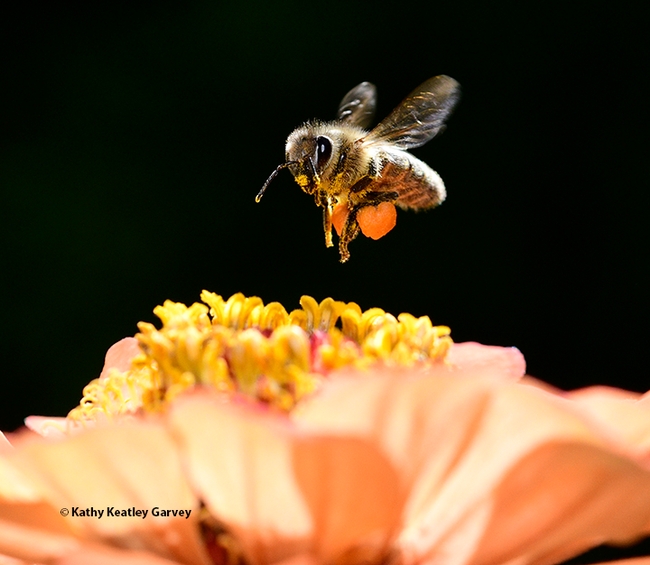
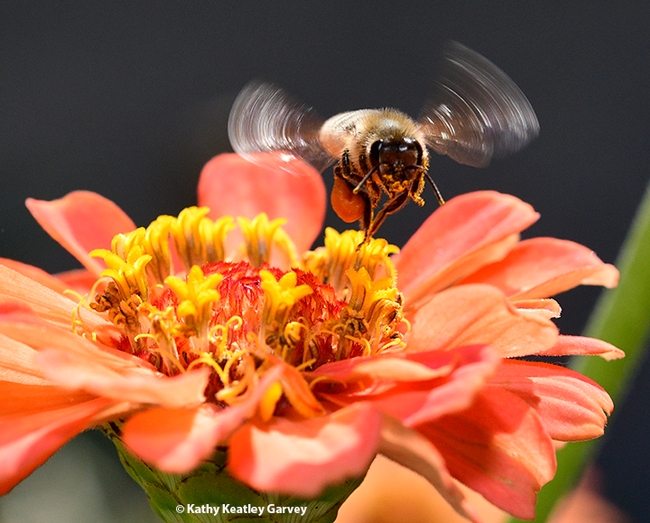
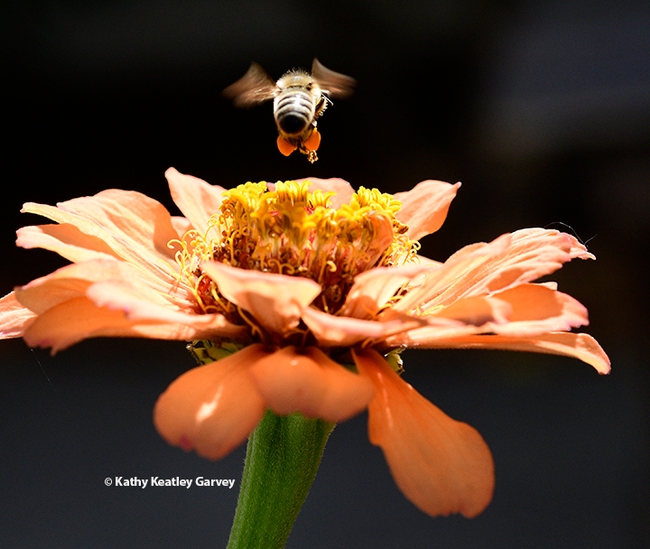
- Author: Kathy Keatley Garvey
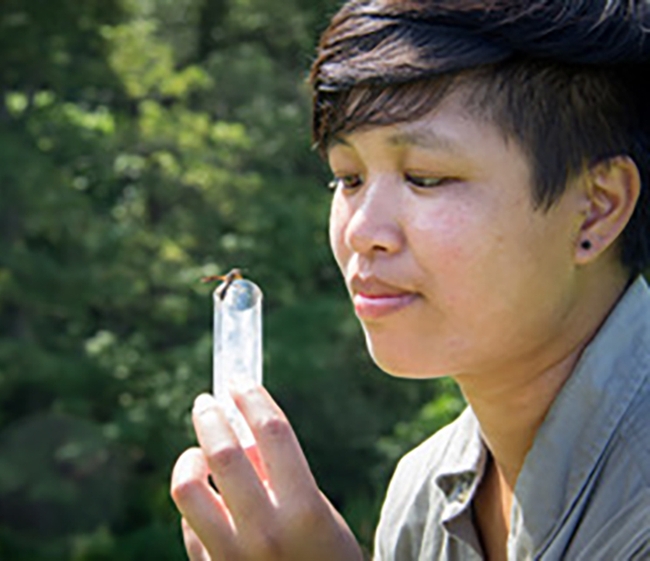
She's the little Concord, Calif., kindergarten student who declared--on the very first day of class-- "When I grow up, I want to be an entomologist!"
And she did.
RJ received her bachelor's degree in entomology in 2021 from the University of California, Davis, and then accepted a four-year, full-ride fellowship offer to complete a doctoral program at the American Museum of Natural History (AMNH). She's a doctoral candidate of comparative biology in the Richard Gilder Graduate School at AMNH and studies in the lab of Professor Jessica Ware.
RJ studies the twisted-wing parasites, order Strepsiptera. As larvae, they enter their hosts, including wasps, bees and cockroaches, through joints or sutures.
Fast forward to today. Her newly published research, “Collection Methods and Distribution Modeling for Strepsiptera in the United States,” is the cover story in the August issue of the journal, Environmental Entomology.
It's not often that an entomologist's first published doctoral research scores the cover of an academic journal.
The cover image shows a parasitized northern paper wasp, Polistes fuscatus, with three male Xenos peckii pupae visible in its abdomen. The image is the work of John and Kendra Abbott of Abbott Nature Photography, Tuscaloosa, Ala.
“The twisted-wing insect parasite order (Strepsiptera) is an excellent example of how beautifully complex evolution and life's interconnectedness can be,” RJ says. “These obligately endoparasitic insects infect several other major orders of Insecta, including true bugs, mantises, cockroaches, flies, wasps, crickets, and even silverfish. Because of this, they can be very difficult to find and study.”
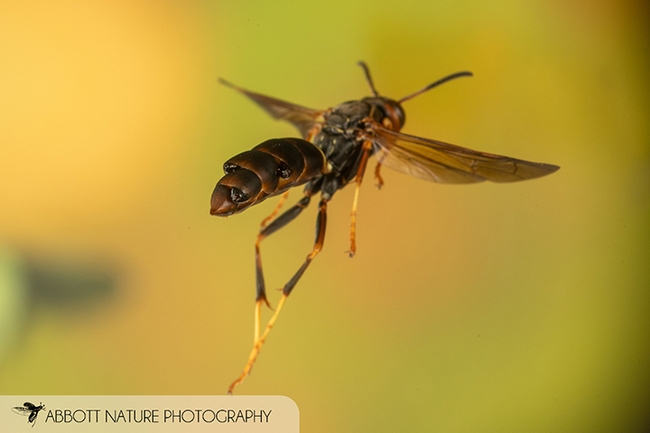
She became interested in the twisted-wing parasites while studying for her entomology degree at UC Davis. In 2019, she was one of four UC Davis undergraduates selected for a two-year funded research career with the University of California Leadership Excellence through Advanced Degrees (UC LEADS) program, which prepares promising students for advanced education in science, technology, mathematics and engineering (STEM). The UC LEADS scholars embark upon a two-year program of scientific research and graduate school preparation.
Guided by UC Davis Distinguished Professor Jay Rosenheim (now an emeritus), RJ launched her independent research project on those bizarre Strepsiptera endoparasites that attack their hosts, the Ammophila (thread-waisted) wasps. Over a two-year period, she studied thousands of specimens at the Bohart Museum of Entomology.
The Bohart Museum houses a worldwide collection of eight million specimens, including “about 30,000 specimens of Ammophila from multiple continents,” according to UC Davis Distinguished Professor Emerita Lynn Kimsey, who directed the museum for 34 years before retiring Feb. 1, 2024, Global wasp authority and UC Davis doctoral alumnus Arnold Menke, author of the book, The Ammophila of North and Central America (Hymenoptera, Sphecidae), identified most of the Ammophila specimens in the Bohart Museum. His book is considered "the bible" of Ammophila research.
RJ went on to enter a poster, “Parental Care and the Risk of Maternally Vectored Pathogens: Ammophila Transmit Strepsipteran Parasites to Their Young,” in the March 2021 Koret UC LEADS Symposium poster competition and won top honors.
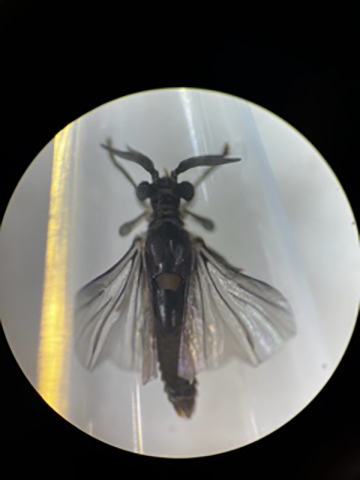
And now, her paper in the Environmental Entomology journal is online at
https://academic.oup.com/ee/issue/53/4.
In their introduction, RJ and her team wrote that Strepsiptera “have a cosmopolitan distribution, but they can be difficult to collect for many reasons. As the larval stages are obligate endoparasites of other insects, strepsipterans are necessarily restricted to the ranges of their hosts and may have patchy distributions among host populations. The neotenic females dwell permanently within the abdomens of their insect hosts, with the exception of some members in the family Mengenillidae. Male strepsipterans can be collected independently of their hosts once they eclose and enter the free-flying adult stage.”
“However, they are likely to still be found within their host ranges since they live for only a few hours and must mate within that time. Females and males range from 0.5 to 5 mm and can be easily overlooked in host abdomens (females) or malaise traps There are no standard procedures for the collection of Strepsiptera, since they parasitize such a wide variety of insect hosts—they are documented to parasitize 7 orders comprising approximately 36 insect families, and these hosts inhabit many different environments.”
Co-authors are Anna Eichert, a doctoral candidate of comparative biology in the Ware lab, and Ware, an AMNH evolutionary biologist and curator. Millena credited Kathy LaPoint of Black Rock Forest, Cornwall, N.Y., for images “taken during our collecting trips,” and Abbott Nature Photography for images of a male Xenos peckii in flight and an Isodontia mexicana parasitized by Eupathocera auripedis.
“My work on the evolution and biology of these tiny insects,” Millena said, “is motivated by how much I want everyone to appreciate the unfathomably intricate lives of the organisms we take for granted every day.”
Well said, and well done!
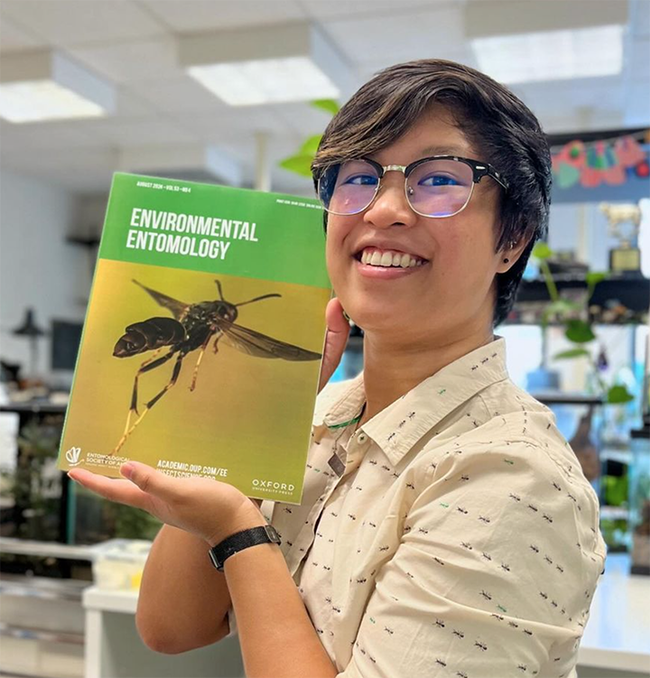
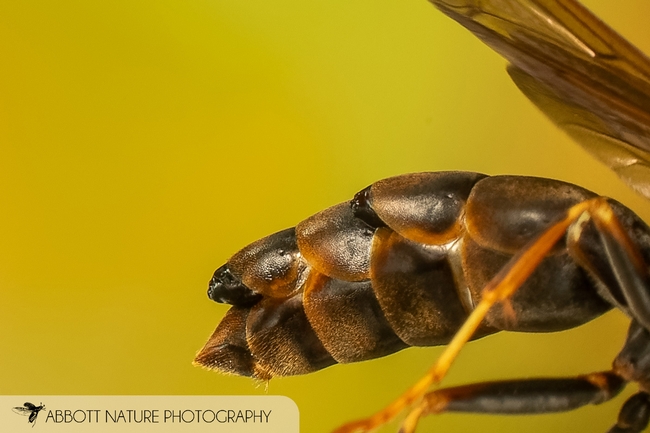
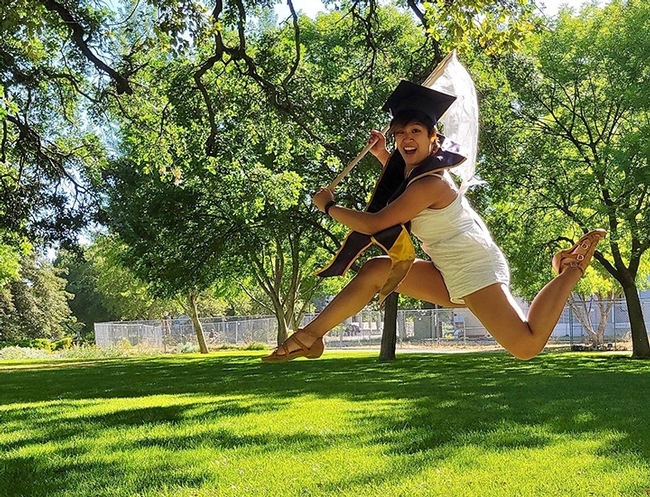
- Author: Kathy Keatley Garvey
Talk about flower power.
When you walk through the UC Davis Bee Haven, a half-acre garden on Bee Biology Road, west of the central campus, you'll see bees and other pollinators foraging on a pink floribunda rose cultivar, “Nearly Wild." It's flamingo pink, quite fragrant and very buzzworthy, providing both pollen and nectar.
This cultivar is aptly named "Nearly Wild." It has five petals, just like wild roses.
The garden, installed in 2009 and a project of the UC Davis Department of Entomology and Nemalogy, is located next to the Harry H. Laidlaw Jr. Honey Bee Research Facility. Director of the haven is apiculturist/researcher Elina Lastro Niño, associate professor of Cooperative Extension, based in the department.
A six-foot long worker bee, the ceramic-mosaic work of Donna Billick of Davis, anchors the garden, as honey bees from the nearby Laidlaw apiary gather nectar and pollen.
But back to the “Nearly Wild” roses.
They remind us so much of the truly wild roses we've seen growing along river banks, roadsides and in fields. Roses (family Rosaceae and genus Rosa) originated some 25 million years ago. Many of today's roses are the result of centuries of breeding.
What's the story behind "Nearly Wild" and what are its characteristics?" The Missouri Botanical Garden website says this is "a floribunda rose ('Dr. W. Van Fleet' x 'Leuchstern') which typically grows 2-3' tall (less frequently to 4') and as wide. It is a dense, shrubby plant which features clusters of mildly fragrant, single, pink roses (to 3" diameter) with center clumps of prominent yellow stamens. Five-petalled flowers are reminiscent of some species roses hence the cultivar name. Flowers bloom continuously from May to frost. Glossy dark green foliage. Introduced by Brownwell in 1941."
The UC Davis Bee Haven is currently being renovated, but you can still visit from dawn to dusk. Admission is free.
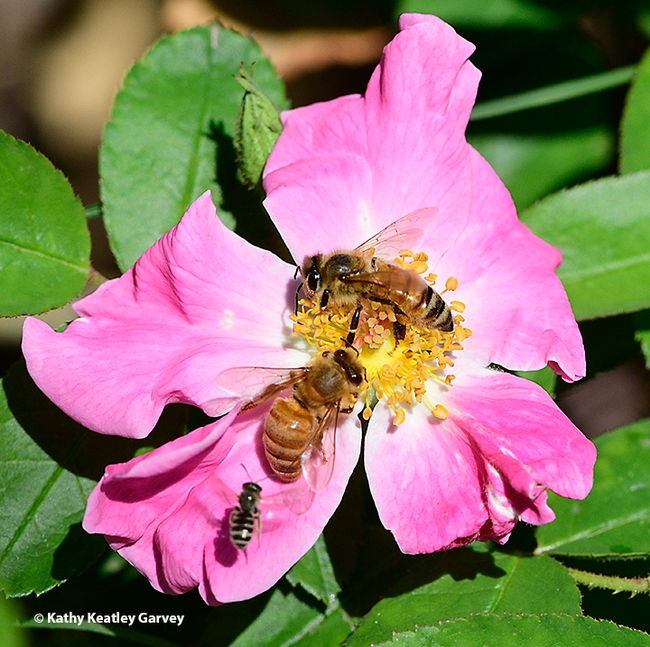
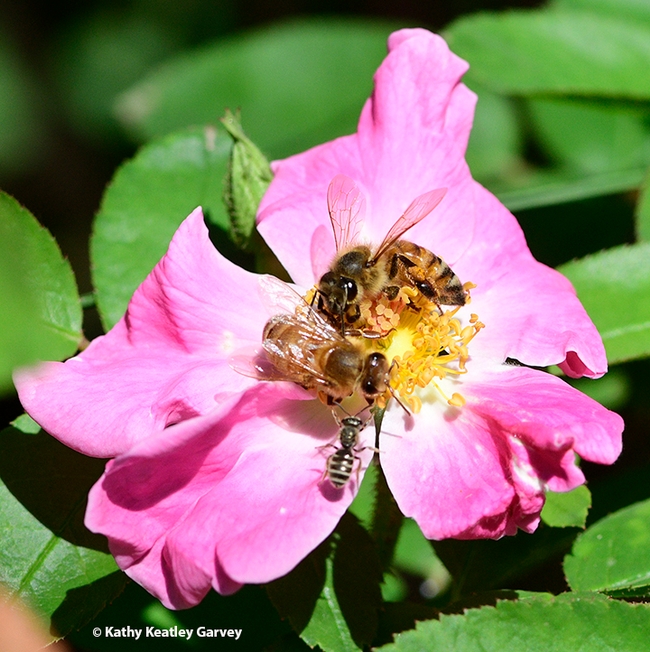
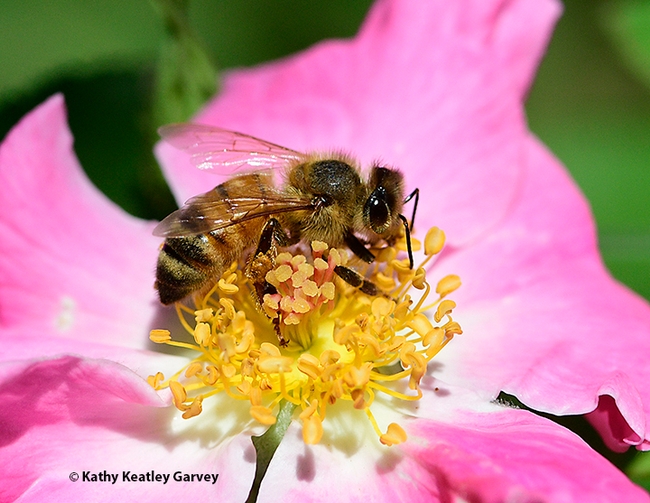
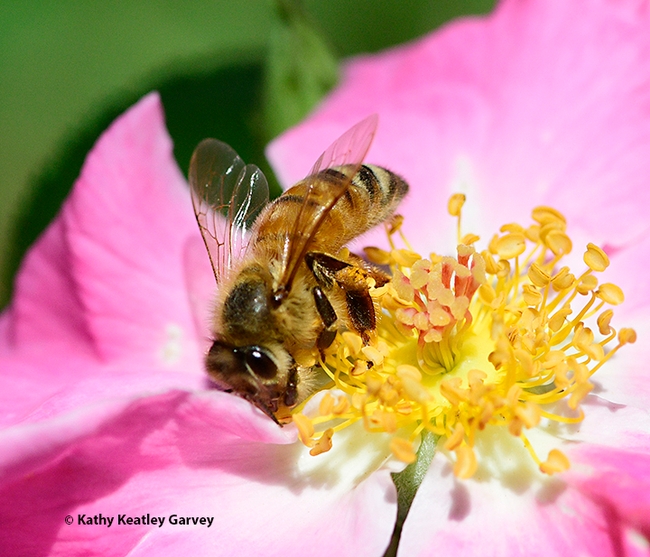
- Author: Kathy Keatley Garvey
It's nicknamed "the sunflower bee" for good reason.
It forages on sunflowers.
We recently spotted a longhorned bee, Svastra obliqua, also called "the sunflower bee," on Gaillardia, aka blanket flower, a member of the sunflower family, Asteracease.
Asteraceae is comprised of more than 32,000 known species of flowering plants. And Svastra? Fourteen different species occur in North America and seven in California, according to the UC Berkeley Urban Bee Lab, which provides this description:
"Overall they are medium to large, with stout bodies, gray hair on their thorax, and irregular striping on their abdomen. Females can be distinguished by their scopae, which are located on their hind legs. They additionally are larger compared to males and have dark faces. Males have yellow markings on the bottom section of their faces and are typically more elongate in body size. Both male and female bees have long antennae. Svastra sp. look very similar to Melissodes without using a microscope. However, Svastra sp. will have longer antennae than both Anthophora and Diadasia so the difference is more noticeable."
Those long antennae...those eyes...those mesmerizing eyes...
You can read more about California's native bees in California Bees and Blooms: a Guide for Gardeners and Naturalists, a book authored by the University of California team of Gordon Frankie, Robbin Thorp, Rollin Coville and Barbara Ertter. All are affiliated with UC Berkeley. Thorp, who received his doctorate in entomology from UC Berkeley, was a member of the UC Davis entomology faculty for 30 years, from 1964-1994. He achieved emeritus status in 1994 but continued his research, teaching and public service until a few weeks before his death on June 7, 2019.
